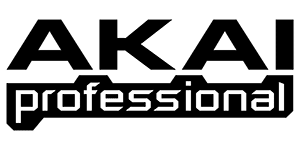In 2016 AKAI decided to "refresh" the old version of MPC Studio, and present its successor - MPC Studio Black. The interface was no different. Major updates affected the housing of the device, which was turned black, improved pads - now they get thicker and more responsive to the touch. In addition, instead of the slippery and inconvenient old "global" and 4 "Q-links" knobs featured by its predecessor, MPC Studio Black acquired brand-new, stunning controls with improved comfortable use.
The device has 8 banks and a 64-note polyphony, and each pad shines with yellow, orange, green and red color to display the velocity level, events and other functions. The built-in display shows the libraries, involved sequences, and the pad assignments.
AKAI software features 12 main user points. "Main" is the main mode. It is designed to change the loop length, select the type of track (Drum, MIDI) and to assign "real time/edit" functions to "Q-Links". Here you can also find the settings for quantization, swing, time shift.
The "Program Edit" button is responsible for the functions pitch change and sample layering (up to 4 samples per pad), changing the speed range, and selecting from 29 versatile filter modes, including the low-pass filter from MPC3000.
You can also add 4 effects to each program and use "Keygroups" to display the samples in a chromatic form through 4 layers, and in the 88-note range, which is great for sampling a piano, rhodes or synth. "Program Mixer" allows you to control the panning, volume and effects, and "Track Mixer" does the same job, but for each of the 128 tracks in a sequence.
In addition, sequences are edited in the "Track View", in the "Next Sequence" you can make sequences that will respond to the pad pressing, and finally, "Sample Edit/Sample Record" provides the user with wide sampling capabilities.
AKAI worked well on the hardware of MPC Studio Black, which provides a competent balance between functionality and compactness. The rear panel of the MPC Studio offers a small number of connectors: USB to your computer, and MIDI In/Out. The workflow is very similar to MPC Renaissance: recording loops, editing/cutting samples, adding filters and effects, turning patterns into songs and exporting. Quantization and sequencer remained unchanged.







